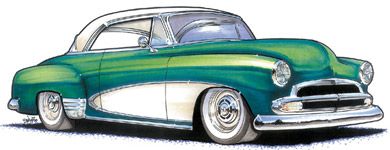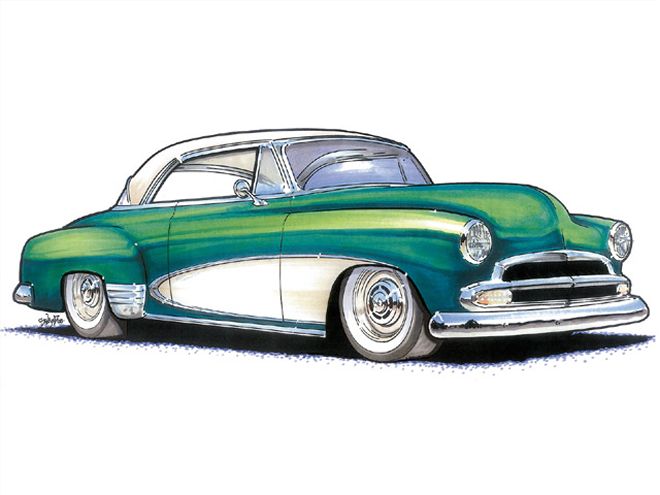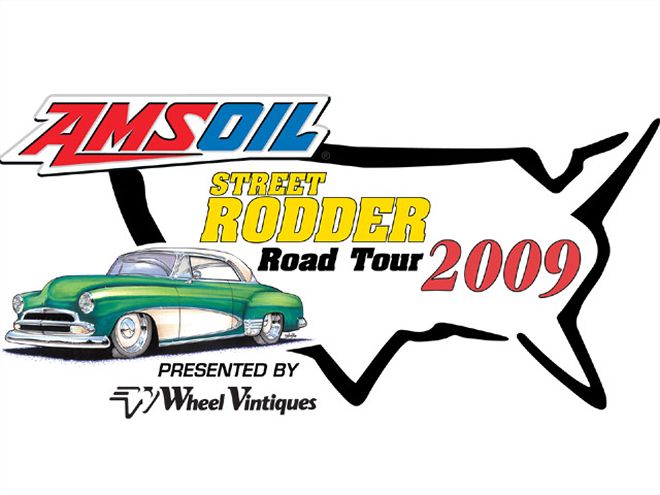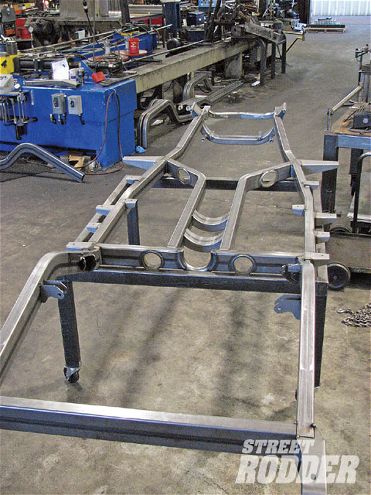

While nothing will replace a traditional ride in the minds of many street rodders, the fact is '49 and later vehicles can be just as cool, particularly when built with the same sense of style and attention to detail found on those earlier cars. That's the point we intend to make with the Street Rodder Road Tour project for 2009, a 1952 Chevy being built by Woody's Hot Rodz. The focus of our efforts is one of the 74,000 plus DeLuxe Bel Air two-door hardtop coupes produced that year. Our hardtop's original selling price was just under $2,000, and it tipped the scales at 3,200 pounds.
While the styling for '52 was basically a refined version of the '49 offerings, Chevys were well-received and held the number one sales position for the year. But while our Bel Air has timeless appeal on the outside, by today's standards it has a number of shortcomings below the skin. Under the hood standard equipment was a 235 cubic inch inline six-cylinder babbitt-basher that still used dippers on the rods to lubricate the poured rod bearings (full pressure oiling to the rods wasn't introduced until '53 on Powerglide equipped cars, and all engines for '54). Behind the six-banger is a two-speed, cast iron Powerglide transmission (the other option was a three-speed manual about the size of a Kleenex box) both were backed by an enclosed driveline and a rearend that attached to the semi-elliptical springs with unique mounts.
While our Stovebolt did come equipped with independent front suspension, there's little that can be said about it that's positive other than it was an improvement over Chevy's original knee-action effort. The pre-ball joint design has so many pivot points to wear out that Brennan had to take off his shoes to count them all, the geometry is antiquated, the steering takes more turns lock-to-lock than a battleship, and the brakes were barely adequate in '52. Of course the engine, trans, rear end, suspension and brakes can be upgraded, but there's still one major weak point-the frame itself.

Under our Chevrolet is what was called a box girder frame. The two-piece 'rails for these frames were made from lengths of inverted U-shaped sheetmetal with flanges that were riveted to heavier flat material to form what is essentially a tube. The "top hat" (as it's often called) of the 'rails is so thin all the major chassis components attach to the bottom flanges of the frame, and that can make updating these cars a challenge. That's the reason we elected to start the '09 Road Tour car from the ground up with a completely new chassis from Art Morrison Enterprises.
Although what's going under the '09 Road Tour car is the first of its kind, the chassis Morrison has developed for '49 to '54 Chevys should ride and handle just like those for the Tri-Five Bowties; in other words it will turn our stodgy shoebox into a sophisticated touring car with retina separating potential.
According to Matt Jones, Morrison's mechanical engineer, preliminary testing indicates the new chassis offers a 30-40% increase in torsional stiffness over the original. In addition the new suspension provides improved roll center migration, which gives the car a consistent, secure feeling when transitioning between right and left turns, or turn in/out conditions.
 New from Art Morrison Enterprises is this frame for '49 to '54 Chevys. This one is going under the '09 Street Rodder Road Tour '52 Bel Air being built by Woody's Hot Rodz.
New from Art Morrison Enterprises is this frame for '49 to '54 Chevys. This one is going under the '09 Street Rodder Road Tour '52 Bel Air being built by Woody's Hot Rodz.
To design the new frame mounting dimensions were first determined, then the shape of the frame rail is next. According to Matt, "Suspension mounting points often require much different rail shapes than stock due to the use of updated suspension components and advanced geometry, although care is taken to minimize fabrication for fit, if any is needed at all. The rails will often mimic factory rails in the mid-section and rear to fit within the factory sheet metal.
Center floor cross members are an important feature that we try to include in every bolt-in chassis, if possible. However, some floor pans do not allow this to happen, so we must add extra strength elsewhere in the chassis. This can be done by strategically placed gussets or using heavier frame material (.180-inch wall thickness vs. 0.120-inch). For those chassis where a center cross member does fit, care must be taken to properly place the rails for optimized strength.
Lastly, we try to provide the best ground clearance and an eye-catching stance by further modifying frame rail shapes and body mount attachment points. In instances like the 1952 Chevrolet chassis, we were able to provide the low ride height for optimum center-of-gravity, while fitting the frame rails close to the floor to bring the bottom of the new frame rails almost flush with the rocker panels, allowing excellent ground clearance." As Matt says, sometimes the best frames are the ones you can't see at all.